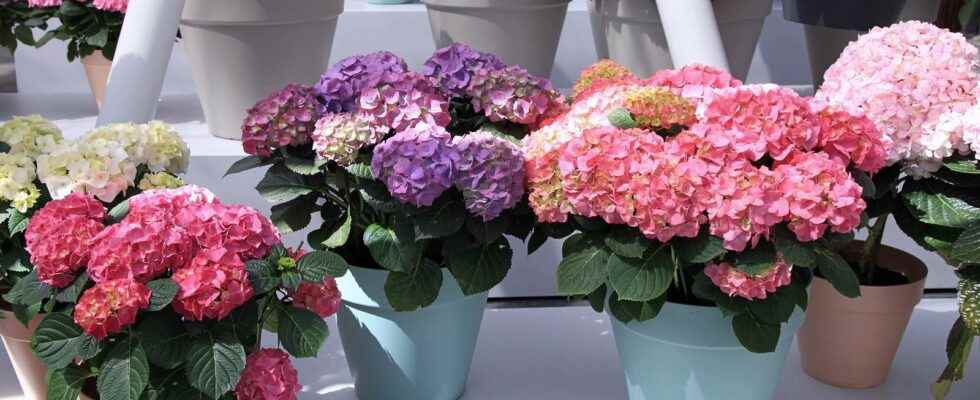This magnificent shrub of heather soil is covered with flower balls from June to October, depending on the variety. Grown in the ground, it also likes pots, when space is limited. What are the secrets to successful maintenance of a potted hydrangea?
Once planted in a pot, how do you care for and maintain a hydrangea to ensure good growth and abundant flowering? Here are some valuable tips.
4 secrets for successful hydrangea planting
If your hydrangea is planted carefully, you will enjoy it for many years. What are the important points to follow for plant a hydrangea pot ?
- choose a land acid kind heathland to fill the pot and accommodate the shrub;
- place a drainage bed at the bottom of the pot (sandgravel or marblesclay over 5 cm) because the hydrangea cannot stand having its roots immersed in soggy soil or in stagnant water that remains in the saucer;
- once planting is complete, install a bed of sparkling of maritime pine, matter which will bring acidity, conserve humidity, prevent weeds from growing and preserve the foot of the shrub from Sun ;
- place the pot in partial shade as full sun can scorch the leaves and flowers. Hydrangeas are understory plants so shade and partial shade are appreciated.
5 things to do to keep a beautiful potted hydrangea
Unlike a hydrangea planted in the ground in the garden, a shrub in jar requires various care to flourish and offer exceptional flowering.
- Watering in a pot is always more frequent than in the ground because evaporation is faster. Avoid letting the soil dry out completely between 2 waterings. For this, regularly bring water to the surface of the pot. Prefer rainwater;
- Fertilizer is needed to support flowering. Choose a special slow-release heather plant fertilizer, counting on a single application in early spring. Another choice to bring food to the shrub, add a fertilizer liquid in watering water once a month, all the time of flowering. Outside this period, stop the amendment;
- The cut is necessary to channel the development of the shrub. Do not cut too quickly inflorescences withered. Prune the branches fall or at the end of thewinter to keep it a beautiful silhouette even if it is placed on a balcony, a terrace or a small space. Take the opportunity to remove stunted, diseased, dry branches or the wood dead ;
- the repotting takes place every 2 or 3 years by offering him a bigger pot and changing part of the substrate ;
- hibernate if necessary potted hydrangeas. Hardy, they can withstand temperatures down to -15°C. If a big cold snap is announced or if the pots are exposed to the north, in the currents ofairsurround the shrubs with a winter veil.
Did you know ?
There are small hydrangeas that are better suited to growing in pots. The hydrangea paniculata ‘Petite Star’ or ‘Polstar’ are only 55 cm high; the hydrangea paniculata ‘Pinkachu’ or ‘Bobo’ do not exceed 70 cm in height; the hydrangea macrophylla ‘Tovelit’ or ‘Sunday Strawberry’ about 70 cm high.
Interested in what you just read?
